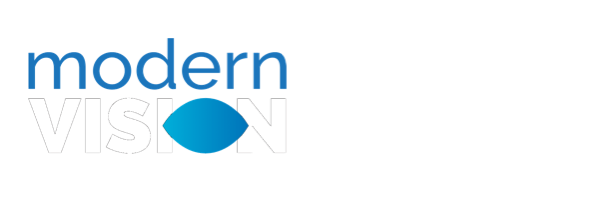You call your eye doctor and schedule your annual eye exam. You arrive for your appointment, and the friendly receptionist asks if you have insurance. You whip out your medical insurance card and say, “Yes, I do,” remembering how much you pay each month for it. As you hand her your card, she gives a slight smile and says, “Yes, this is a medical insurance card, do you have vision insurance? Because this doesn’t cover routine vision care.” You stand there confused as you thought your expensive health insurance would cover all your vision needs. Later, a friend mentions their vision discount card and things get even more confusing.
We get it; insurance can be confusing. This article will make things clearer, helping you understand the differences between Vision insurance, Medical/Health Insurance, and Vision Discount Plans.
What’s the difference between medical insurance and vision insurance?
A vision insurance policy covers different things than your medical health insurance policy. Concerning your eyes, medical insurance helps lower unexpected costs for eye injuries or eye diseases–things like glaucoma and cataracts. Vision insurance typically covers a portion of routine vision needs, like annual eye exams, prescription glasses, readers, and contacts.
Vision Insurance Plans typically cover optometric needs like:
- Annual Eye Exams: the routine checkup you should get yearly to assess your vision and overall eye health.
- Prescription Eyewear: a discount or allowance for the cost of the frames and lenses for nearsightedness, farsightedness, and astigmatism.
- Enhanced Lenses: Some plans may allow you to upgrade your eyeglass lenses to include anti-reflective coating, blue light blocking, Trivex materials, or photochromic lenses that go from clear to dark.
- Contact Lenses: if you prefer contact lenses over glasses, many vision plans offer a discount on contact lens purchases and/or subscriptions. This sometimes includes the fitting fees the first time your optometrist helps you place the contacts to make sure they fit your eye well and are comfortable.
Some vision plans do not cover all the items above, so check with your carrier to see what is covered in your specific policy.
What Vision Insurance Plans do not cover:
You’ll need medical insurance for any of the following. Vision plans typically do not cover:
- Any treatment that is considered an eye disease or disorder, including the more prevalent ones like:
- Age-Related Macular Degeneration (AMD)
- Cataracts
- Glaucoma
- Diabetic Retinopathy
- Amblyopia (Lazy Eye)
- Floaters
- Dry eye
- Eye infections
- Any prescription medicine needed to treat a condition.
- Any eye surgery, hospital stay, or medical services from an ophthalmologist.
- Any emergency room visits for an eye injury.
- Examinations of patients using medications with potential eye side effects, such as steroid medications, arthritis medications, etc.
This list above is what medical insurance covers. Medical insurance is very beneficial to help you offset the financial costs of these treatments because they can be expensive. Your provider can bill medical insurance for any medically related costs.
How much does vision insurance cost?
Vision insurance costs from $15 to $35 per month for an individual plan in the United States. Middle-tier plans usually cost $10 and $20 per month while higher-tier plans can cost $20 and $35. The premiums can be lower if vision insurance is provided through your employer.
Vision care plans are much cheaper than medical insurance. The average cost of an individual medical insurance plan that is not subsidized in the United States is $477 per month. This doesn’t include additional deductibles or co-payments that may occur.
Who are the major vision insurance companies?
Here is a list of the seven largest vision insurance companies, starting with the largest:
- VSP Vision Care
- Blue Cross Blue Shield
- Humana
- Delta Dental (Yes, they also provide vision insurance.)
- Vision Benefits of America (VBA)
- SightCare: SightCare
- UnitedHealthcare
Are Vision Insurance plans and Vision Discount Plans the same thing?
No, vision discount plans are not insurance policies. Instead, members pay an annual fee to access discounts on eye care services and products. These plans negotiate lower prices for services like routine eye exams, eyeglasses, and contact lenses with a network of providers, which members can then access at a discounted rate.
Unlike vision insurance, discount plans do not pay a portion of the service cost. Instead, members pay out-of-pocket for all services and products at a discounted rate. Discount plans can offer significant savings, especially for those who do not require frequent eye care but still want to save on routine visits or eyewear. The annual fee for a discount plan is typically lower than the total annual premiums for insurance, making it a cost-effective option for some individuals.
Key Differences
Payment Structure: Vision insurance involves monthly premiums and copays, with the insurance covering the rest up to certain limits. Discount plans involve an annual fee, with members paying discounted rates out-of-pocket for services and products
Coverage: Insurance provides more comprehensive coverage for eye care services and may cover a significant portion of the costs for exams and eyewear than do discount plans.
Cost Management: Insurance is designed to reduce out-of-pocket expenses for frequent eye care needs, making it suitable for individuals who expect to use their benefits regularly. Discount plans are better suited for persons with fewer eye care needs or who are looking for a more affordable option for accessing discounts.
What about medical insurance?
Some medical insurance plans cover one routine examination per calendar year. Medical insurance can often be billed if the patient has a medical problem that is classified as billable to medical insurance, i.e. dry eyes, retinal detachments, cataracts, etc.
Which insurance card should I bring to my optometrist?
If you have medical insurance and vision insurance, bring them both. That way, you have the fullest spectrum of coverage available no matter what brings you into the office or what we discover during your eye examination at Modern Vision Solutions.
What special programs does Modern Vision Solutions offer to help make eye care insurance simpler and more affordable?
PrimeSight® Membership Program
Modern Vision Solutions offers our PrimeSight® Membership Program, which functions like an in-house savings program and can save patients 10-50% or more off regular vision care fees. The MVS PrimeSight Membership Program offers high-quality care at an affordable price and is actually preferred by many patients over traditional insurance plans for its easy-to-understand and non-complicated structure. Membership includes various discounts on exams, glasses, contacts, and more, providing over $1,000 in annual value for a nominal fee paid once every two years. Both individual and family Memberships are available! Enrollment is simple and can be completed by phone, online, or in person at your EyeAnalysis appointment.
Vision Insurance Accepted at Modern Vision Solutions
In addition to our PrimeSight Membership, MVS currently accepts the following vision insurance programs:
• EyeMed
• Spectera
• Davis Vision
• Superior Vision
Modern Vision Solutions also currently accepts the following medical insurance programs:
• Aetna
• BCBS
• Medicare
• Cigna
• Medica
• Midlands Choice
Medical insurance programs coming soon to Modern Vision Solutions:
• United Health Care
Don’t see your plan listed? Check in with our team, as we are constantly adding new accepted eye vision and medical insurance programs.
Related FAQs About Vision Insurance
Can I use my Health Savings Account (HSA) or Flexible Spending Account (FSA) to pay for things not covered by my vision insurance or vision discount plan?
Yes, a great way to pay the costs of eye exams, eyeglasses, or contacts that are not covered by your vision care plan is to use your HSA or FSA. Both of the accounts allow you to put away money pre-tax for medical and health expenses. That means you save around 20-30 cents per dollar you spend on healthcare through those accounts. Most optometry visits and costs fall under the umbrella of things that FSA and HAS cover.
Does Medicare help cover my routine vision needs?
No, Medicare does not cover any wellness eye exams or offer subsidies for glasses or contact lenses. Those are all out-of-pocket costs. Medicare will cover some portions of eye surgeries or eye disease treatments.
Do medical sharing plans cover any vision issues?
Medical sharing plans like Liberty HealthShare, Christian Healthcare Ministries, Medi-share, and Samaritan Ministries do not typically cover wellness eye exams, glasses, or contacts. They do allow members to share their medical eye expenses for eye diseases, non-elective eye surgery, and eye disorders according to their specific guidelines for medical reimbursement submittals.

Dr. Megan Anderson is the lead optometrist at Modern Vision Solutions in Omaha, NE. She completed her Residency in Refractive Surgery and Primary Care and holds a Doctor of Optometry degree from the University of Missouri – St. Louis College of Optometry St. Louis, MO. She is a member of the American Optometric Association, American Academy of Optometry, and the Nebraska Optometric Association. Dr. Anderson has had experience in multiple refractive surgery and optometry practices. She has served as a teaching assistant in Clinical Optometry I, II, & III courses. Our patients love her incredible empathy.










